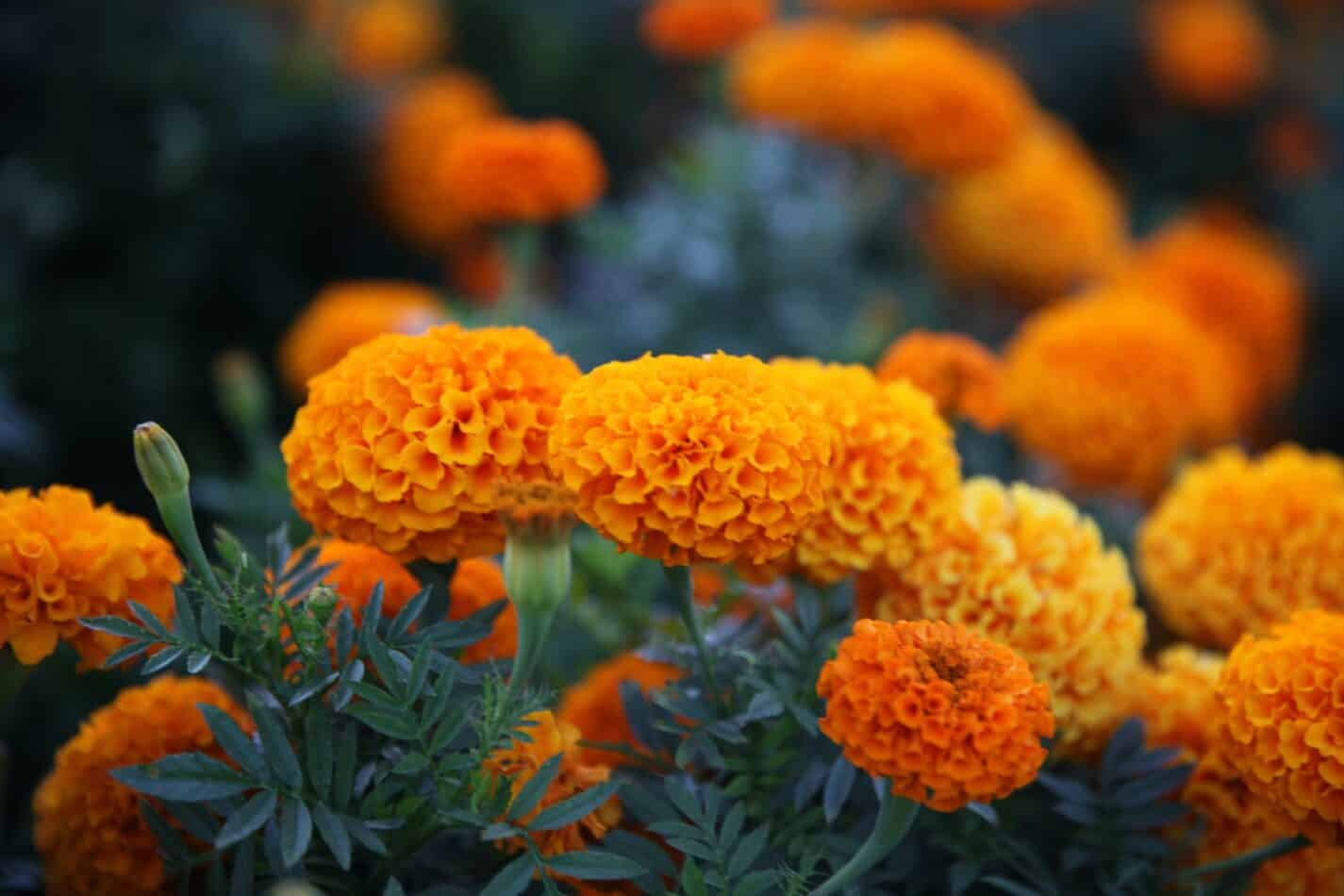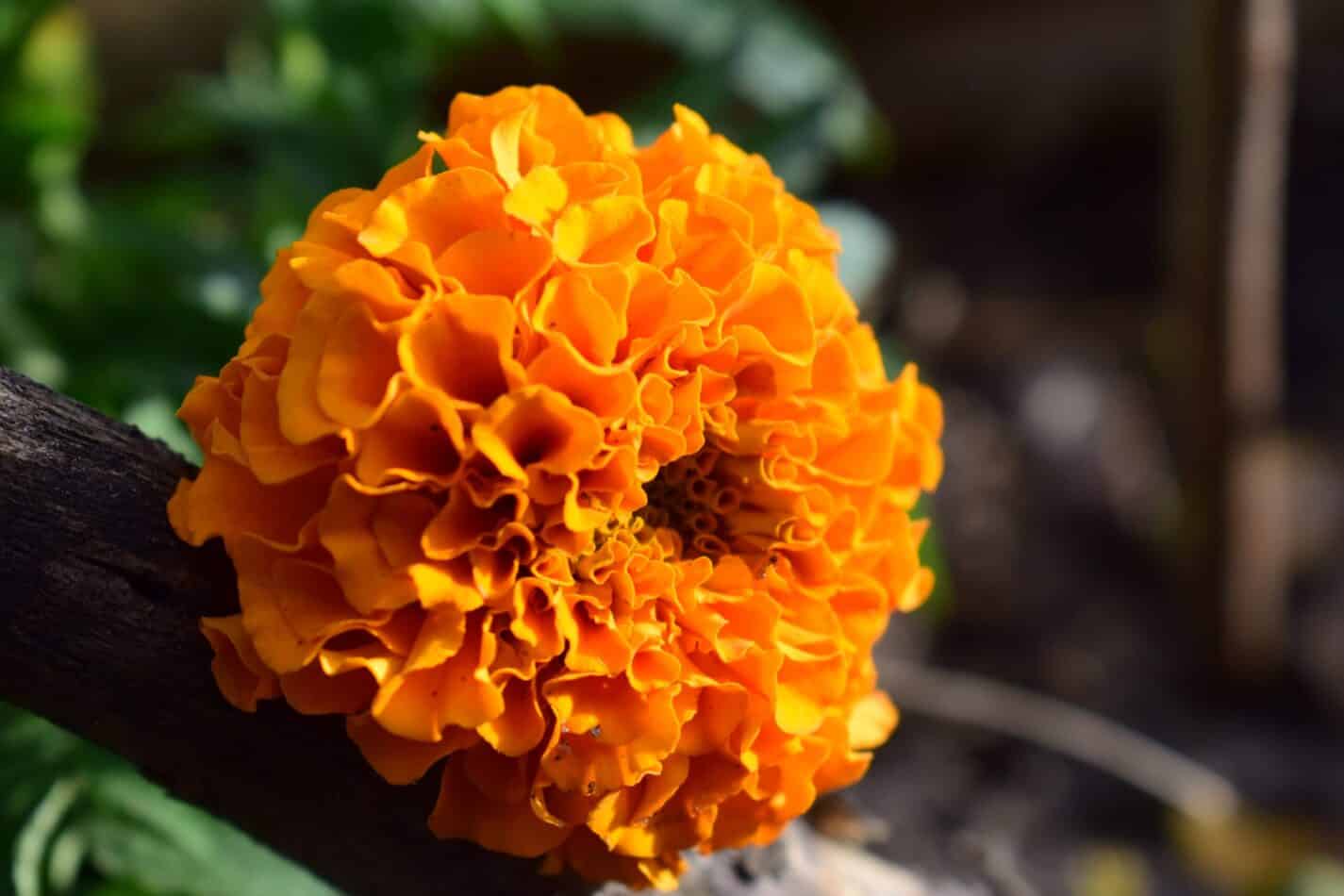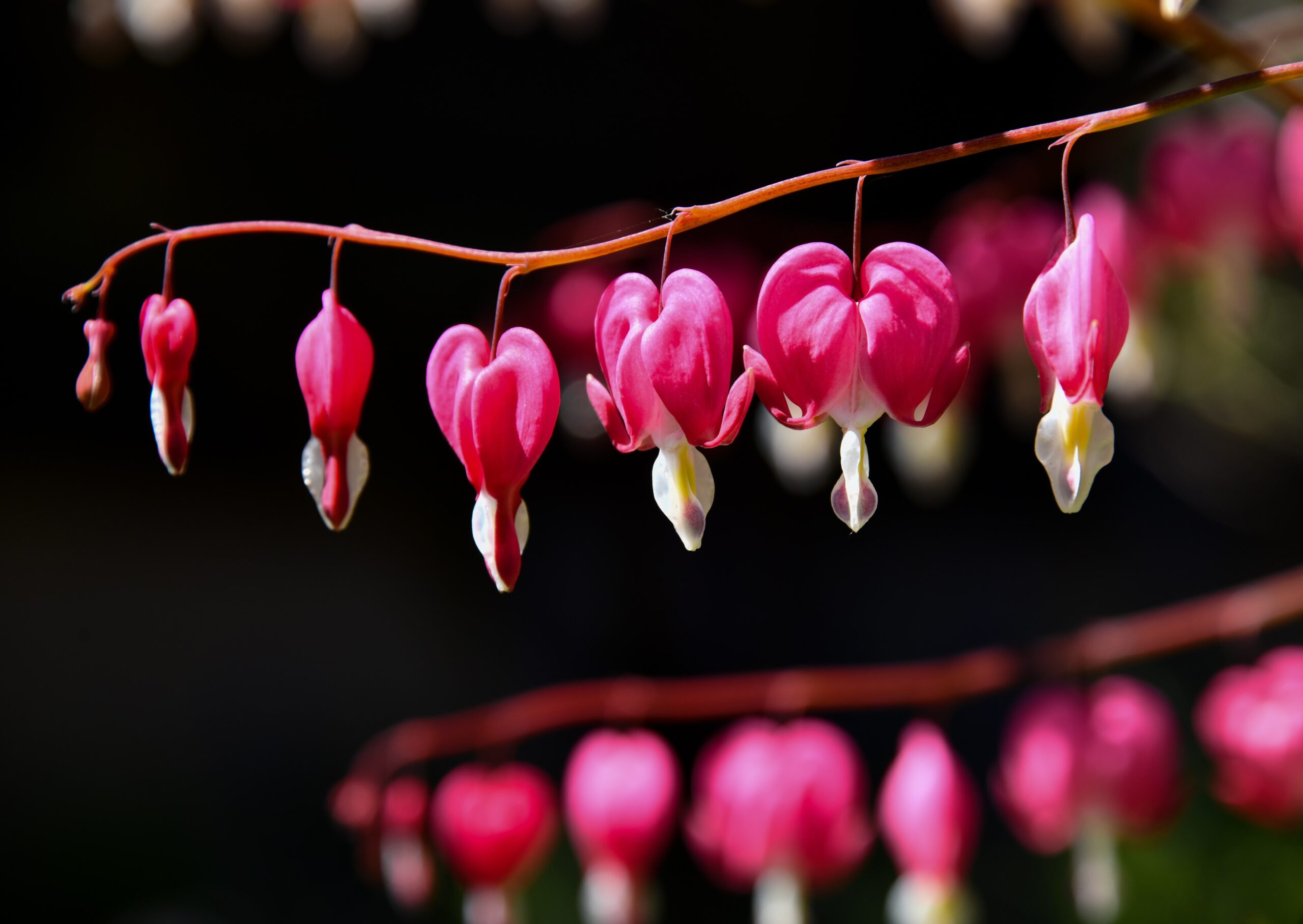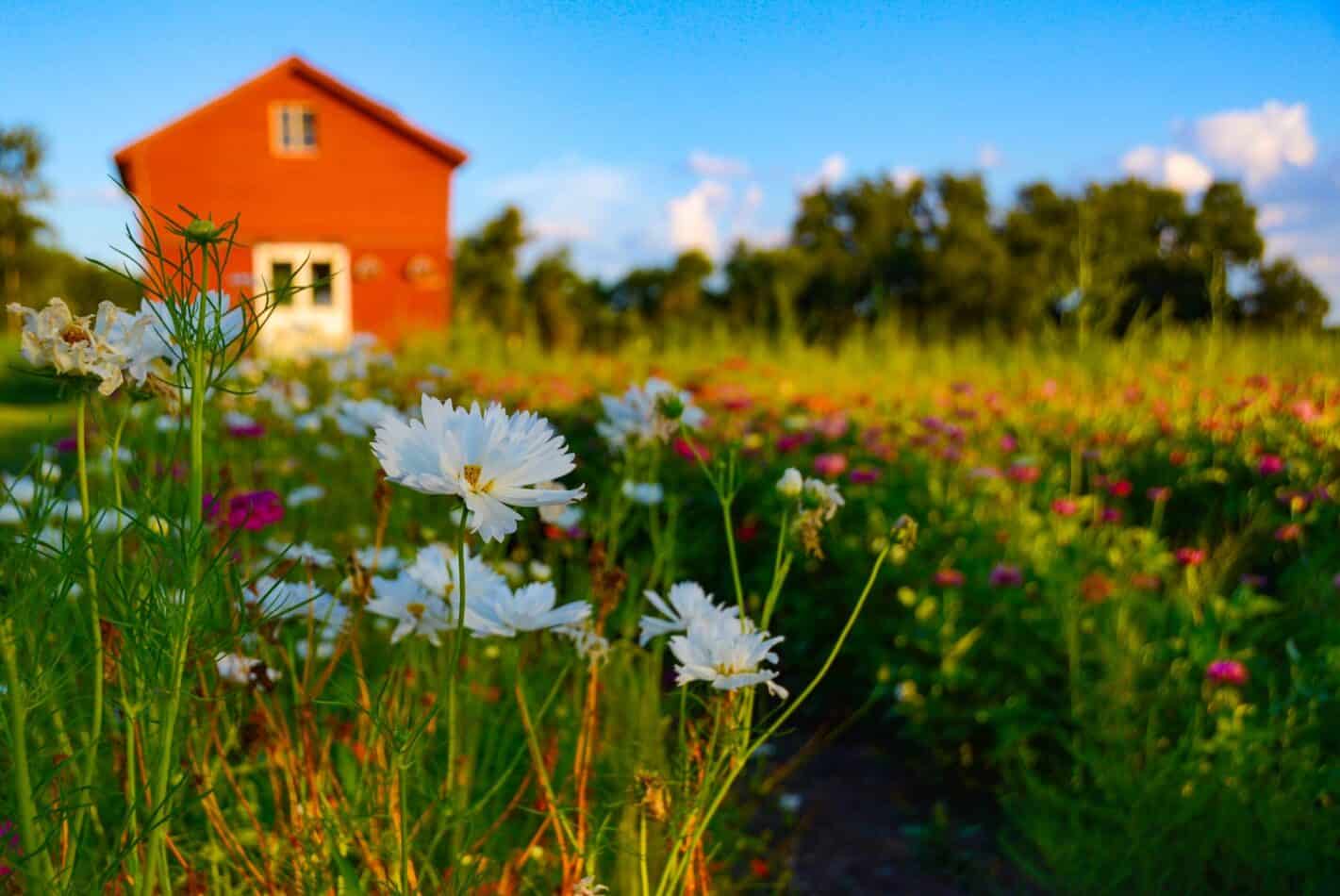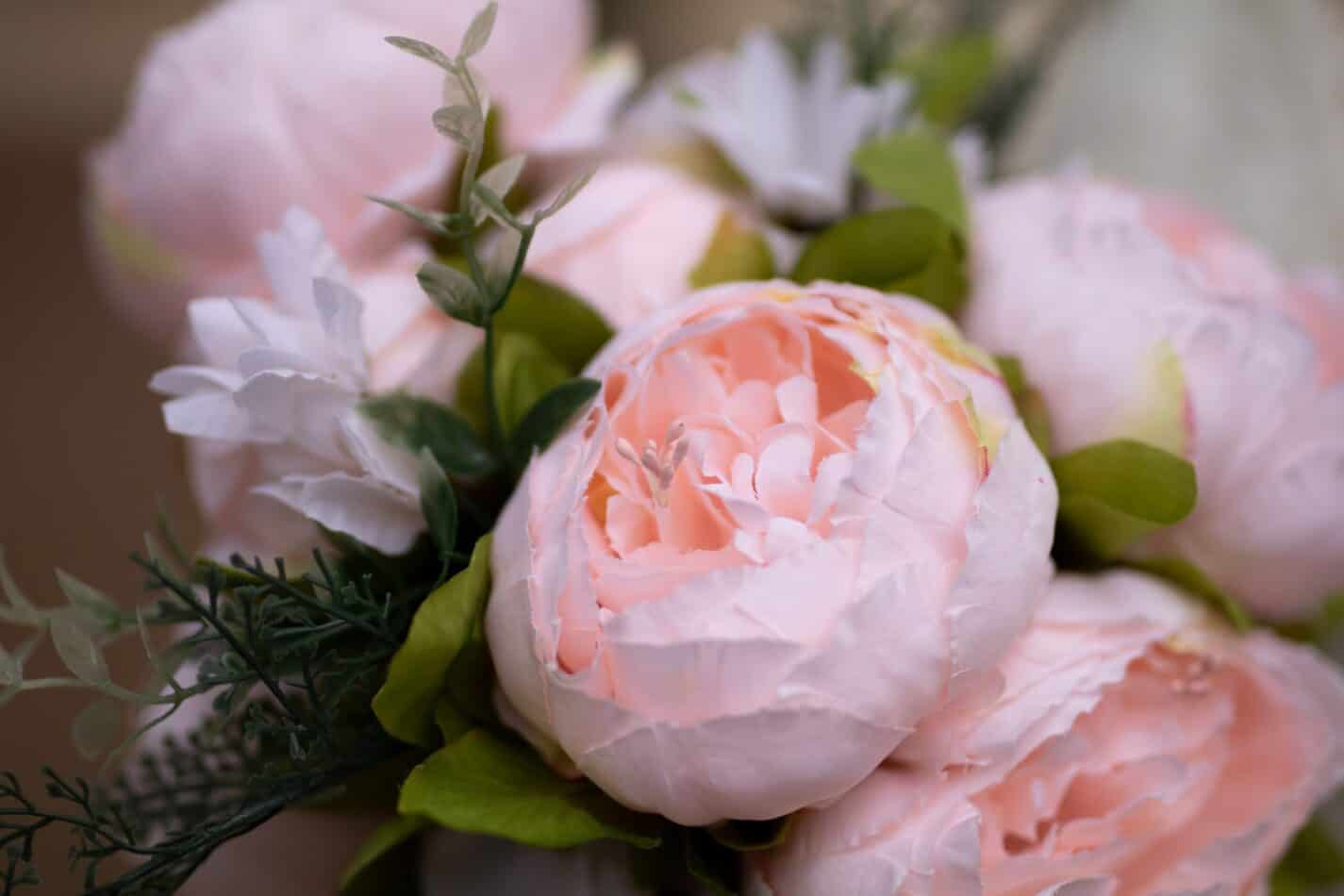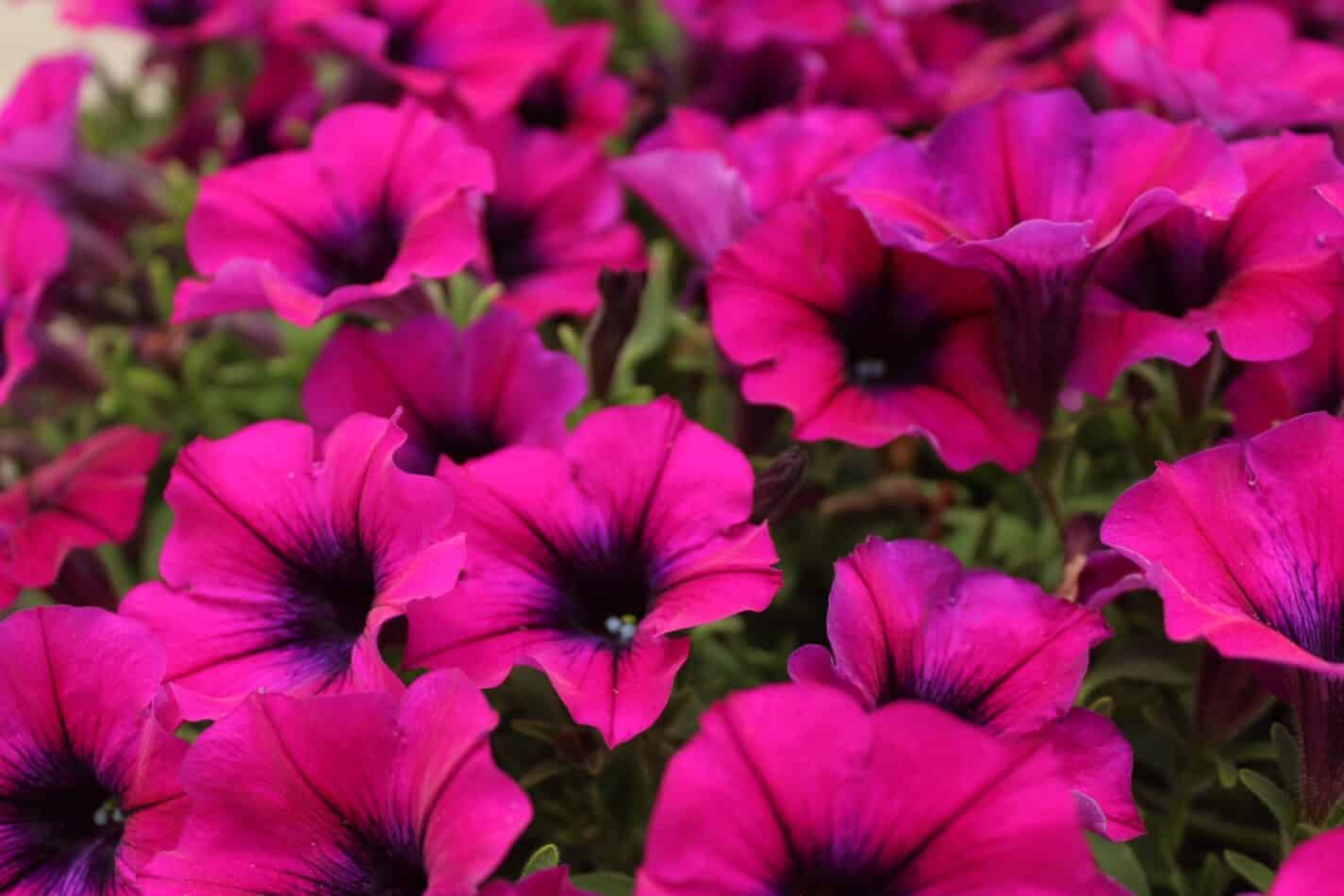Marigolds are the happy and bright flowers of summer. They are drought-tolerant, low-maintenance, and thrive in almost any soil or environmental conditions. So, which is the best marigold to grow in your garden?
The easy-care plant comes in a wide range of bloom colors and plant sizes, plus they provide organic pest control for the yard and garden. It’s challenging to select the absolute best marigold to grow at home since they are all beautiful and beneficial in their way. We will examine some of the general characteristics, growing habits, and benefits that marigolds offer, then narrow it down to a few of the best to grow at home.
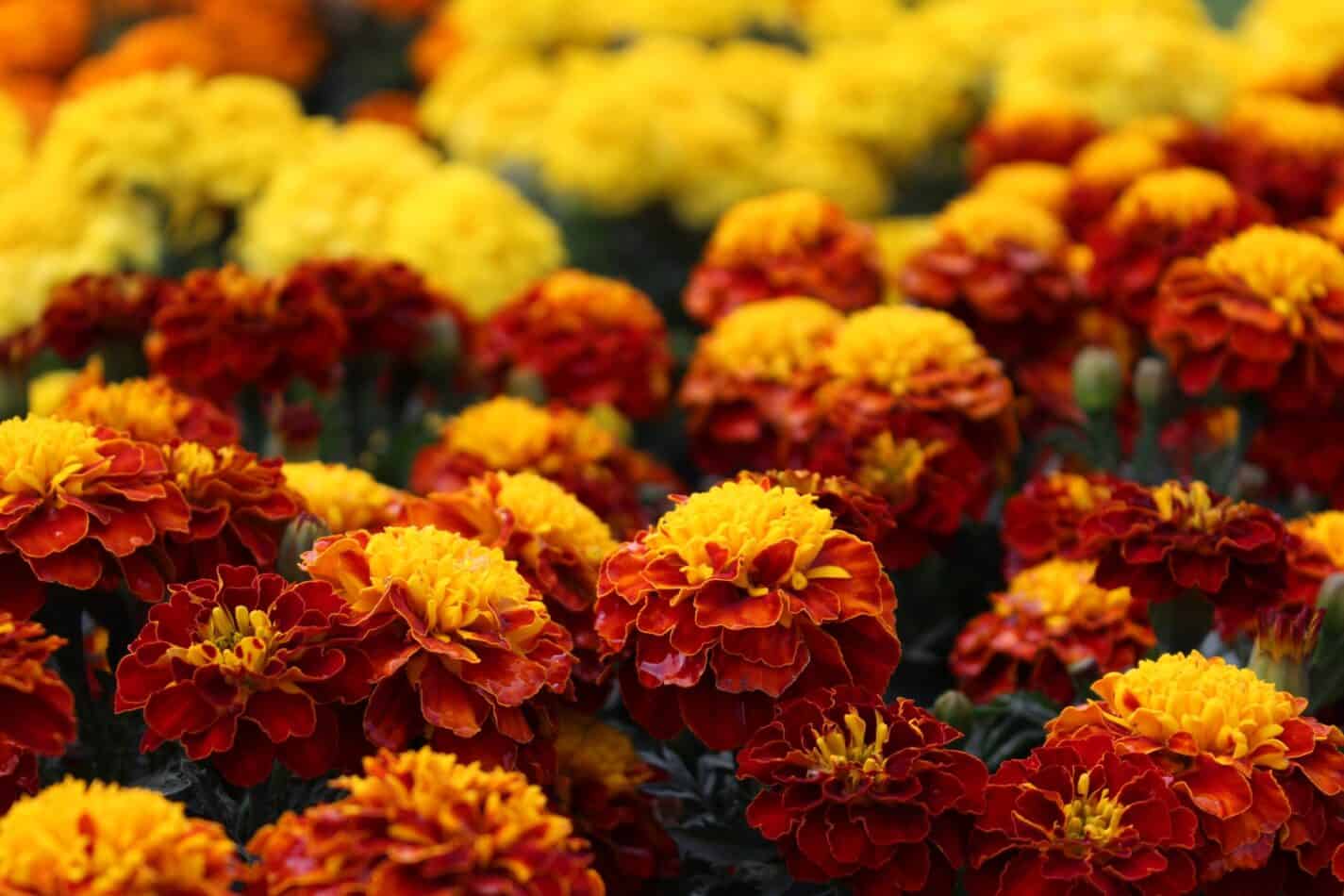
Bloom Colors, Sizes, Petal Counts
When marigolds are mentioned, most people think of small orange blooming plants, but the plants can do far more than just that.
- Bloom colors include orange, yellow, gold, red, and mahogany. Some new marigold cultivars produce white, striped, and bi-color blooms.
- Bloom sizes range from the 1-inch produced by the Signet variety to the 5-inches produced by the African type.
- Petal counts on the blooms vary greatly and range from single petaled flowers with a total of 5-6 petals to the enormous African blooms with innumerable petals. The petal varieties are called single, double, and pom-pom. The petal styles are very evident, and all are equally popular.
Species Cultivars
Marigold cultivars are often sold as part of a set with similar growth characteristics and colors. These sets are called series. For example, several series of marigolds grow about 12 inches tall and have yellow petals. Some series flower earlier than others. Marigolds are native to tropical and subtropical America. They were first cultivated in Mexico over 2000 years ago. African marigolds (tagetes erecta) are also grown commercially because they produce large, double flowers and blooms from mid-summer to frost.
- African marjoram ( Tagetes minuta)
is an annual herbaceous flowering plant native to South America. It is grown as an ornamental plant for its attractive purple flowers. It rises 15 to 30 cm high and spreads via underground rhizomes. It is often confused with T. patula, which has larger flowers and is less hardy.
- ‘Crackerjack”
is an open-pollinated plant that grows well in hot climates. It mixes golden, orange, primrose, and yellow flowers. It is an excellent choice for the southern states because it will grow well in warmer temperatures. It is also a perfect choice for the northern states because it doesn’t require special care. It does need regular water, though.
- ‘French’ marigolds
are small, bushy plants with flowers ranging from 1 to 2 inches. They bloom in bright colors, including yellow, orange, red, pink, purple, and white. Single types have one row of petals, while anemone types have two rows of petals. Crested types have short, densely ruffled, cream-colored petals that resemble a tuft of hair. Plant heights range from 6 to 18 inches, depending on the style. They are hardy in USDA zones 4 through 9.
- ‘Sunset’ series marigold
has 4-inch daisy-like flowers on compact plants. Colors include ‘Flamingo Pink’ (pink), ‘Gold Rush’ (gold), ‘Golden Sunset’ (orange), ‘Orange Sunrise’ (orange), and ‘Red Sunset’ (red).
- ‘Tangerine‘ and ‘Single Gold’
are two marigold varieties resistant to root-knot nematodes. When intercropped with other crops, marigolds may help protect against root-knot nematodes by suppressing the numbers of the pest. However, planting marigolds as a cover crop does not appear to provide any protection for neighboring plants.
Bloom Time
Whatever your favorite cultivars of marigolds are, the plant can be counted on to produce blooms from spring until the first fall frost. If the plants are grown in containers and protected from frost, they will continue to bloom until the first hard freeze in winter. If you are attracted to the color of Marigolds but not the shape, you can look at other orange flowers for inspiration.
Harvest Seeds
Marigolds are continuous bloomers and always have colorful blooms that will produce seeds. Allow a few flower heads to remain on the plant until they are dry. Gently pick the dried flower heads from the plant and place them in a paper envelope. Do not use a plastic container. The flowerheads may still contain moisture, and if they are placed in plastic, the moisture will not evaporate the seeds will mold and not be viable. A paper envelope will allow any remaining water to evaporate and the seeds to dry out completely.
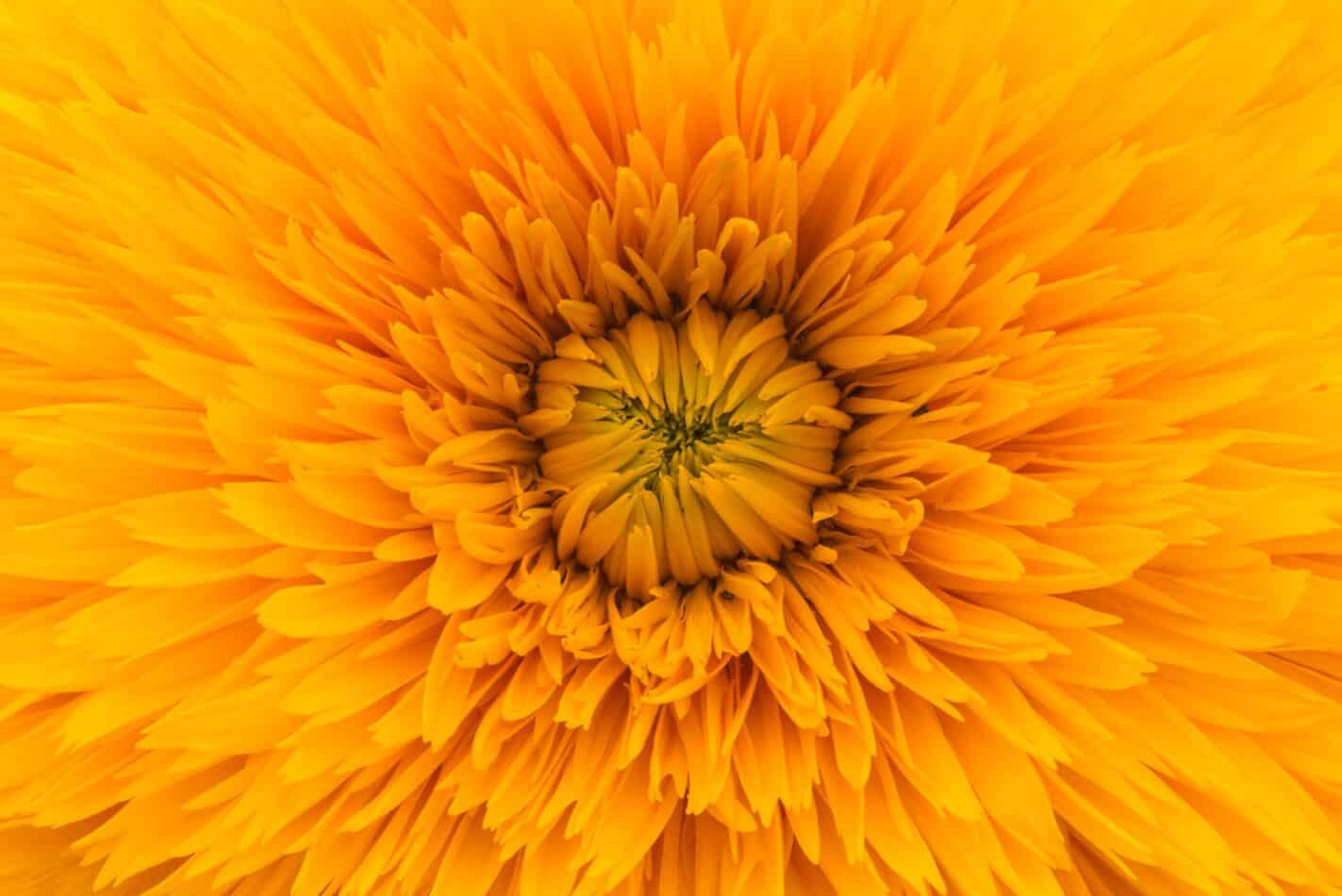
Plant Sizes
Dwarf marigolds reach a mature size of 6 inches tall and wide. African marigolds reach a mature height of 4 feet and spread 2 feet. French marigolds fall in the middle and grow about 1 foot tall and 9 inches wide.
Reasons Why Planting Marigolds is a Good Idea
Notwithstanding the obvious (they are pretty), there are many reasons why marigolds are a good investments for your garden. Here is a list of the reasons why we think you should all have some marigold love:
- Butterflies, bees, ladybugs, and other beneficial insects are very attracted to marigolds.
- Marigolds attract pollinators and provide them with a healthy meal.
- The flowers provide organic pest control and deter common garden pests like mosquitoes, tomato hornworms, and cabbage worms.
- Cats, dogs, deer, and other small animals dislike the scent and taste of marigolds and will stay away from the growing flower area.
- The plant germinates quickly from seeds, will produce bright green leaves, and will bloom in 8 weeks.
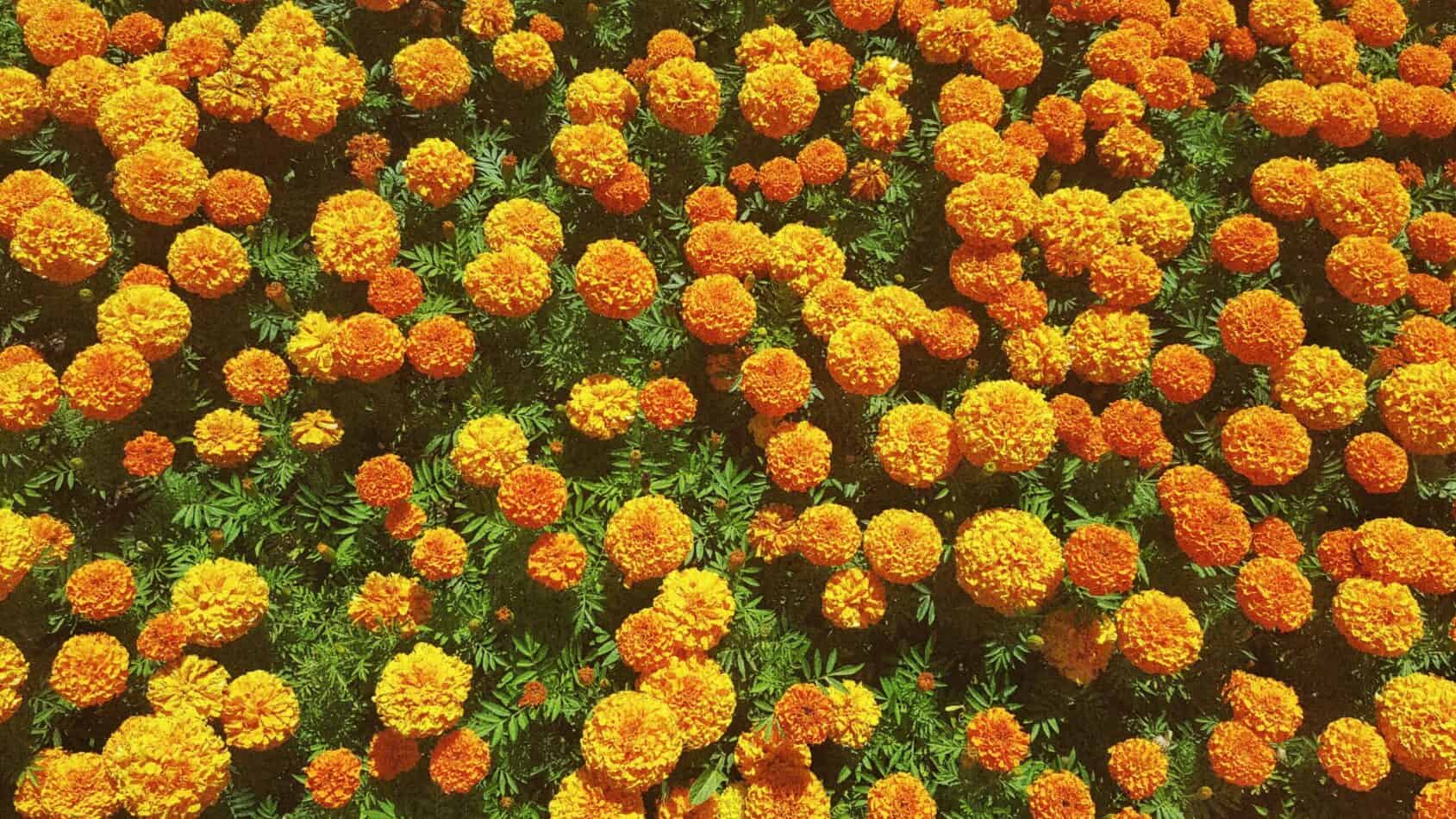
So, What’s the Best Marigold to Grow in Your Garden?
There are well over 60 varieties of marigolds, but three are the most popular. These are the ones commonly found in garden centers and nurseries. Choose the one that fits your garden best:
- French marigolds are compact annuals with double flowerhead up to 2 inches.
- African marigolds are tall and produce very dense blooms that resemble pom-poms.
- Signet marigolds produce single petaled blooms and are 1 inch in size. The flowers are edible and often used as a garnish for salads, pasta, and vegetable dishes.
Do you have space only in a small corner of your garden? Choose French marigolds. Do you like cooking? Plant Signet marigolds. Do you need a visually filling flower? Plant African marigolds. Once thing I am certain of: these pretty October flower will surely add some vibrancy to any garden.
What we love from Amazon this week
Buy these wonderful flowers directly from Amazon:


